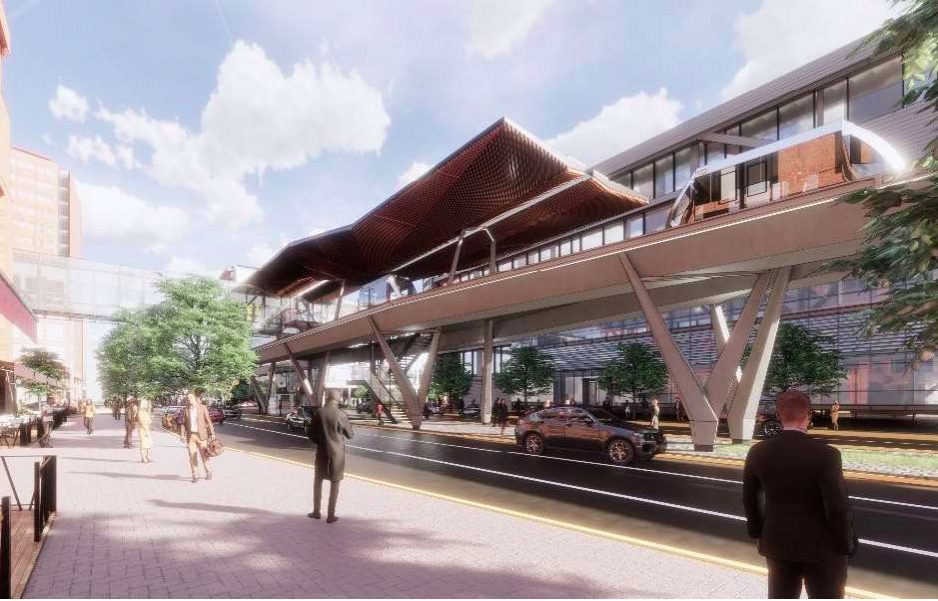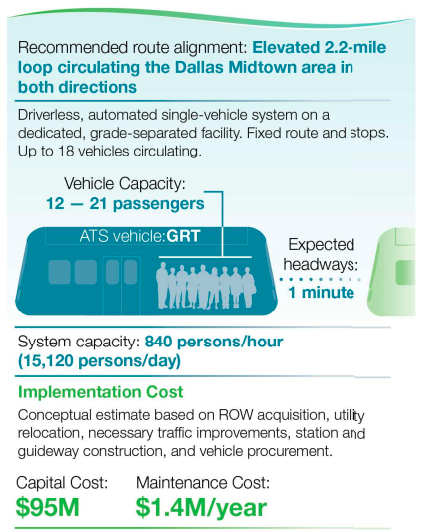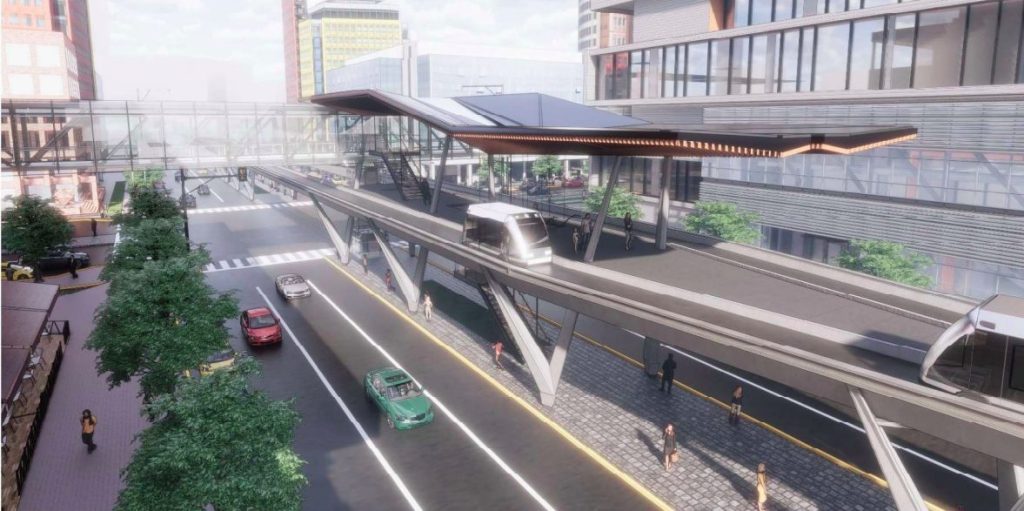People-moving trams running on an elevated track could be part of the “live, work, play” development that’s planned to replace Valley View mall.
Dallas City Council will consider adopting the “Dallas Midtown Autonomous Transportation System and Shared Parking Feasibility Study” during its meeting Wednesday. The study recommends a $95-million group rapid transit system, which runs on a track, is fully automated and doesn’t require a driver.
Dallas Midtown has been renamed the Dallas International District.
The study proposes a 2.2-mile elevated loop circulating throughout the development. Here’s how it’s worded:
The study recommends a group rapid transit (GRT) technology—a vehicle resembling a small bus in outward appearance, able to run on a dedicated looped route with fixed pick-up and drop-off locations. After review of many different vehicle types, this option was selected based on feedback from stakeholders and the public, cost, and its technical performance in the following areas: level of service, technological maturity, and infrastructure requirements.
This automated people mover was first pitched for Dallas Midtown in 2015. More from the study:
Of the various route and station alignments considered, the study recommends an elevated system based on projected implementation costs, operational reliability, pedestrian access, and a reduced potential for conflict with vehicles at-grade. Further, the study identifies six potential station locations, with the objective of evenly distributing access, enhancing pedestrian connectivity, and aligning with vehicular and transit access points to the district.
The system itself is expected to cost about $95 million to purchase and install and about $1.4 million per year to maintain.
The system could provide a way for people to move around the development, from homes to offices to restaurants, without getting in their cars.
“Midtown will become the first of what can be expected to be many such developments that use autonomous technologies to increase mobility within a dense, diverse district while also connecting to regional networks,” the study states.









